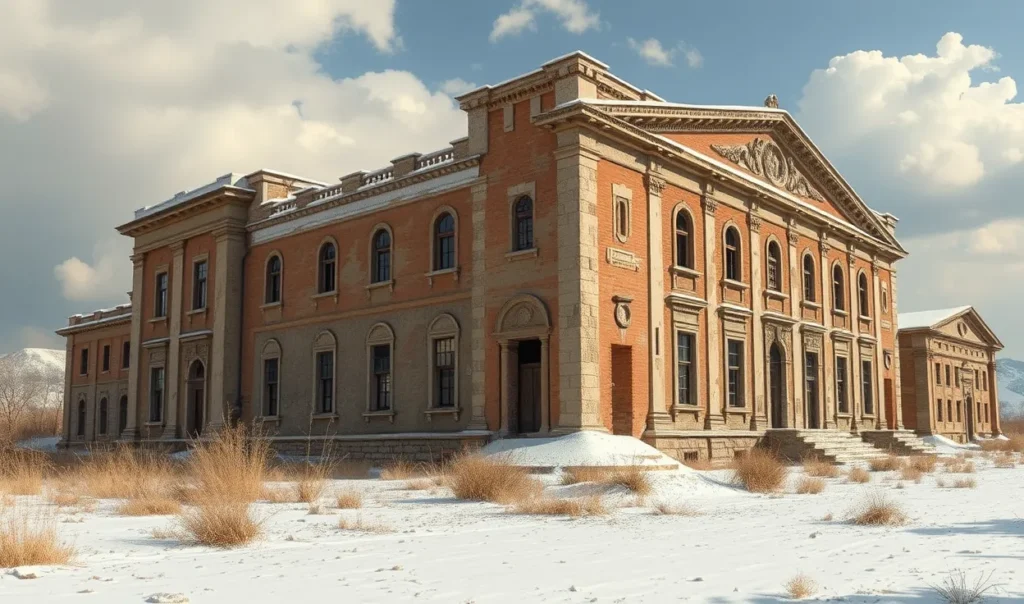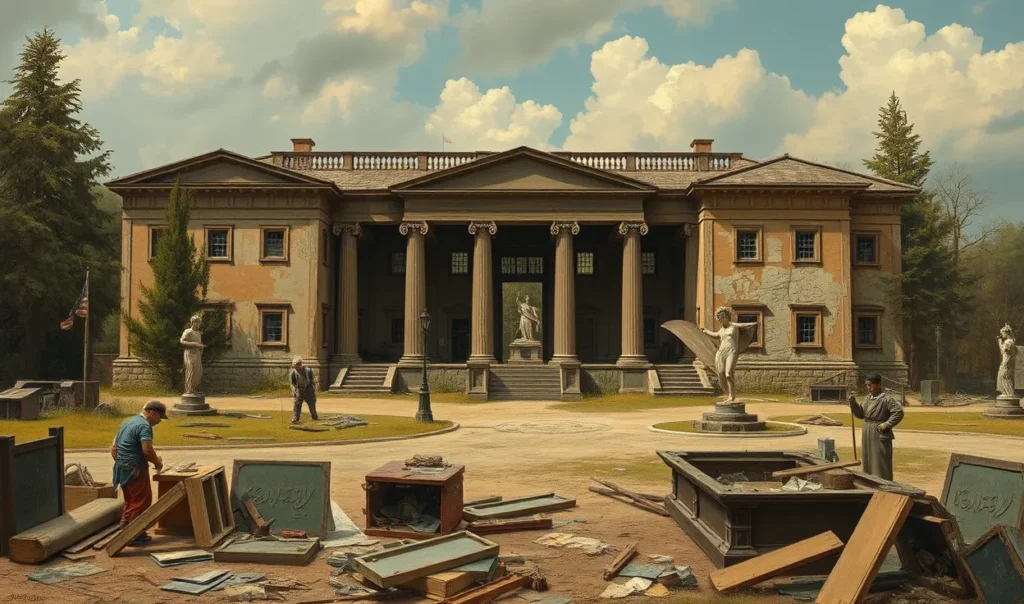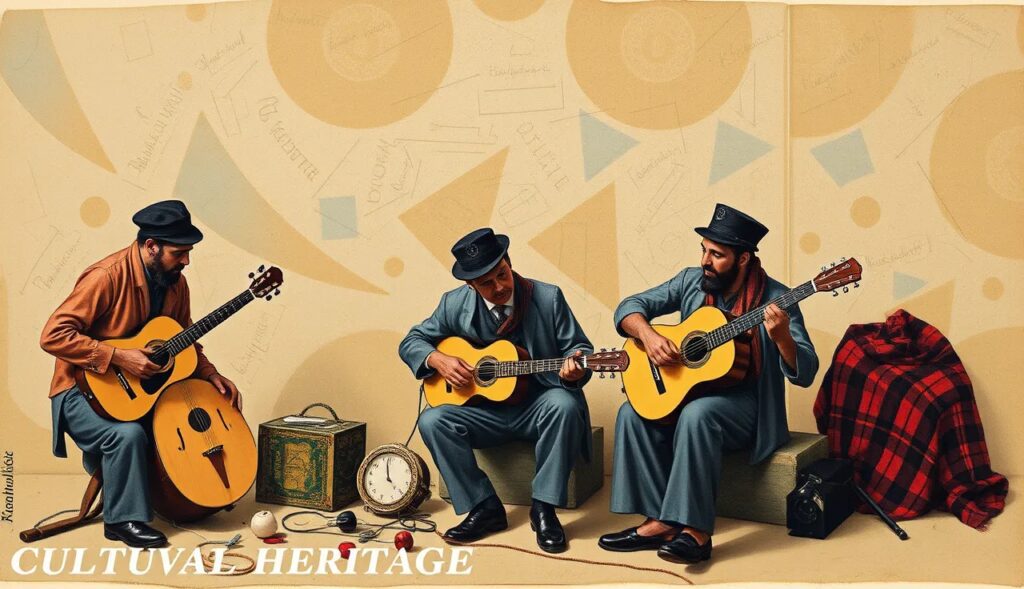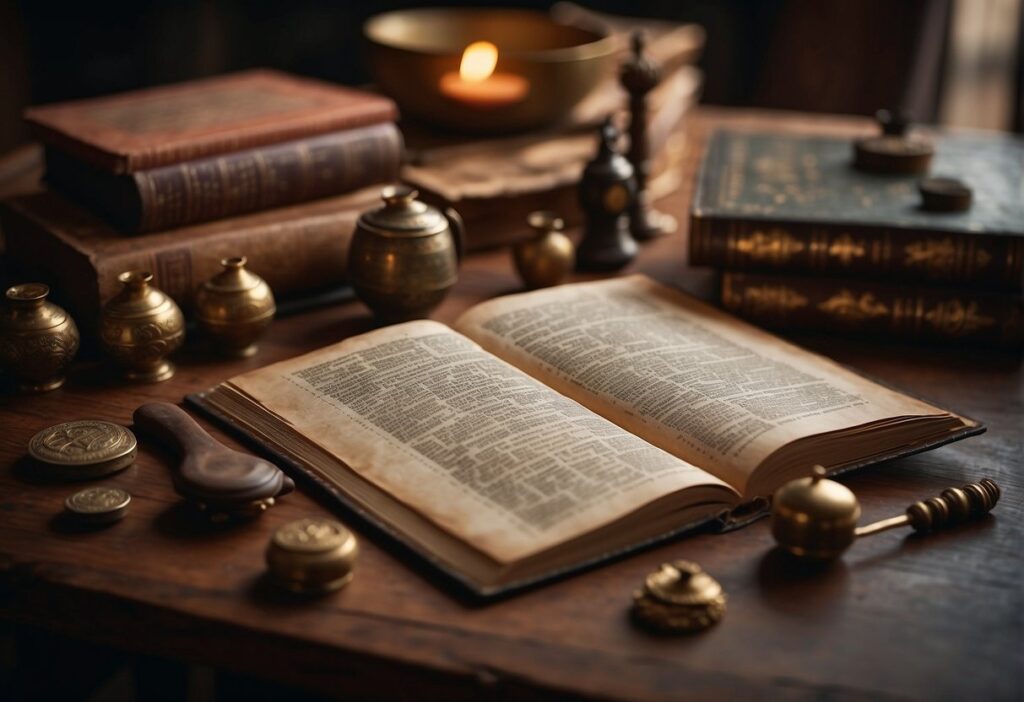
The Role of AI in Reviving Historical Art
How AI Identifies and Repairs Damaged Art
Artificial intelligence has revolutionized how we approach art restoration. By analyzing high-resolution scans, AI algorithms identify cracks, faded pigments, and missing elements. This enables restorers to visualize and repair damaged sections without risking the original piece.
AI tools like convolutional neural networks (CNNs) mimic the human brain’s ability to identify patterns. These systems are trained on databases of art styles and techniques, ensuring that any “fixes” remain historically accurate. For instance, AI can reconstruct a Renaissance fresco while staying true to Michelangelo’s brushstrokes.
Balancing Authenticity and Innovation in Restoration
One challenge is maintaining the historical integrity of an artwork while using modern technology. AI proposes restorations, but human experts decide whether to implement them. This collaboration blends historical accuracy with cutting-edge solutions, ensuring preservation doesn’t mean transformation.
Case Study: Reconstructing Ancient Frescoes
In Pompeii, AI reconstructed Roman frescoes lost to time. By comparing fragments with similar works from the era, researchers pieced together long-lost designs. The results offered insights into ancient life, architecture, and societal values.

Reimagining Art With AI: Beyond Restoration
Breathing Life Into Forgotten Masterpieces
Sometimes, AI goes beyond simple restoration, taking on creative challenges like filling gaps in incomplete artworks. For example, AI “completed” sketches by Leonardo da Vinci by predicting how the artist might have finished them.
This technology also reimagines famous works in modern contexts. Imagine Van Gogh’s Starry Night adapted for a virtual reality experience, inviting viewers to “walk through” the painting.
Generating New Art Inspired by Lost Eras
AI doesn’t just restore—it creates. Trained on centuries of artistic styles, AI generates original pieces inspired by historical movements. Tools like DALL-E and Artbreeder produce digital art that feels like it belongs in an ancient gallery. These creations spark debates about authorship and what defines “art.”
AI-Driven Art Restoration Techniques: Tools of the Trade
Neural Networks for Artistic Precision
AI’s ability to process vast amounts of data quickly makes it invaluable for art restoration projects. Neural networks analyze thousands of art images, identifying style-specific features like brushstrokes, color palettes, and textures. This precision ensures restored details align with the original artist’s intent.
For instance, DeepArt technology uses neural networks to predict how damaged sections of a painting might have looked, preserving subtle nuances that would otherwise be lost.

Advanced Image Recognition in Restoration
Image recognition tools scan historical artworks to identify signatures of decay, such as discoloration, erosion, or missing layers of paint. Platforms like Adobe Sensei or Google’s TensorFlow assist experts in detecting micro-level flaws invisible to the human eye.
By combining machine learning models with high-res imaging, restorers gain a detailed map of an artwork’s vulnerabilities, allowing for targeted restoration efforts.
AI in Action: Famous Restorations You Should Know
The Rembrandt Project
One of the most striking examples of AI’s contribution to art preservation is the restoration of Rembrandt’s The Night Watch. AI helped reconstruct portions of the painting that were cut away centuries ago. By studying similar works, it produced a digital version of the complete masterpiece.
This approach not only preserves history but also sparks renewed interest in these iconic works.
Reviving Ancient Manuscripts
AI isn’t limited to visual art—it also restores ancient texts. For example, machine learning algorithms can decipher faded writing in ancient manuscripts by analyzing ink traces invisible to the naked eye. This reveals stories, histories, and cultures thought to be lost forever.

Ethical Implications of AI in Art Restoration
Who Owns AI-Restored Art?
The question of ownership looms large in AI-driven art restoration. When a machine enhances or reimagines a piece, who holds the creative rights? Is it the museum or institution, the developer of the AI, or the public?
Restored artworks often blur the lines between original creation and AI intervention, raising debates over authenticity. Experts argue that AI should act as a tool, not a creator, to respect the historical value of the piece.
Preservation vs. Alteration: Striking a Balance
AI offers powerful solutions, but its use in restoration comes with risks. Excessive reliance on machine predictions might lead to over-interpretation, where restorations stray too far from the original.
Ethicists emphasize the importance of human oversight to ensure changes are minimal and historically informed. Transparency in the restoration process is also crucial to maintaining public trust.
Bridging the Gap Between Art and Technology
Public Engagement Through Digital Artifacts
AI doesn’t just preserve—it democratizes. Through tools like virtual reality and augmented reality, restored works can be shared globally, making art accessible to anyone with an internet connection.
Interactive experiences, such as exploring 3D reconstructions of ancient sculptures, allow audiences to engage with history in immersive ways. This bridges the gap between traditional museum settings and modern digital platforms.
Educational Applications of AI in Art
AI-powered restorations are reshaping how art is taught. Students can examine restored versions of ancient artifacts alongside the originals, learning about historical techniques, artistic evolution, and the science behind preservation.
Inspiring a new generation of artists, these tools foster a deeper appreciation for both the history of art and its future possibilities.
Examples of how AI has been used to Restore and Reimagine Lost Artworks:

1. Rembrandt’s The Night Watch
The Rijksmuseum in Amsterdam collaborated with AI specialists to digitally reconstruct portions of Rembrandt’s The Night Watch that were trimmed in 1715 to fit a smaller space.
- Process: Using historical descriptions and similar works by Rembrandt, AI filled in the missing sections with remarkable accuracy.
- Impact: Visitors can now view a digitally enhanced, complete version of the masterpiece.
Read more about this restoration project.
2. Pompeii Frescoes Reimagined
In Pompeii, AI played a key role in reconstructing frescoes damaged by volcanic ash from the eruption of Mount Vesuvius in AD 79.
- Process: AI analyzed fragments of frescoes and compared them to other artworks from the same period. This allowed for predictive modeling of missing areas.
- Impact: Researchers gained insights into Roman-era art techniques and themes, helping to reconstruct cultural history.
3. Leonardo da Vinci’s Incomplete Works
AI has been used to complete some of Leonardo da Vinci’s unfinished sketches, such as his studies for mechanical inventions and human anatomy.
- Process: By studying his other works, AI algorithms predicted how Da Vinci might have completed his drawings, extending sketches with historically accurate precision.
- Impact: These visualizations provide a fuller picture of the artist’s genius and his creative process.
4. Deciphering the Dead Sea Scrolls
The Dead Sea Scrolls, a collection of ancient Jewish texts, suffered severe degradation over centuries.
- Process: AI-powered image recognition tools analyzed microscopic ink patterns on faded scrolls, matching fragments to reassemble texts.
- Impact: Entire portions of lost biblical and non-biblical texts have been reconstructed, offering invaluable insights into ancient religious practices.
5. Salvador Dalí’s Interactive Museum Exhibits
While not a restoration, AI reimagined Salvador Dalí by creating an interactive version of the artist for a museum exhibit.
- Process: AI analyzed Dalí’s photos, interviews, and writings to recreate his persona in a digital avatar.
- Impact: Visitors could “interact” with Dalí in a way that bridged art, history, and cutting-edge technology.
Learn more about the Dalí Lives project.
6. Reconstructing Notre-Dame Cathedral
Following the devastating fire in 2019, AI has helped in reconstructing the damaged Notre-Dame Cathedral.
- Process: AI models analyzed 3D scans of the building taken prior to the fire. This information guides the restoration by predicting structural details that need recreation.
- Impact: The use of AI accelerates the reconstruction timeline while maintaining historical accuracy.
The Future of AI and Lost Art
Predicting Tomorrow’s Challenges
AI’s growing presence in art raises exciting possibilities but also long-term questions. How will these technologies evolve, and what safeguards will be necessary to protect historical authenticity?
New advancements may one day allow for real-time restoration, where art can be monitored and repaired continuously, preventing damage before it occurs. Balancing progress with preservation will be key.
AI as a Partner in Creativity
In the years to come, AI will increasingly act as a collaborator for artists, historians, and restorers alike. By merging creativity with technology, we can continue uncovering hidden histories and reimagining the art world for generations to come.
Final Note: If you’re fascinated by AI’s role in art preservation, check out tools like Runway ML or explore projects by organizations such as the Google Arts & Culture initiative.
FAQs
What are the ethical concerns with AI in art restoration?
Ethical concerns revolve around authenticity and ownership. Restorations made with AI must be carefully documented to avoid presenting altered works as originals. Additionally, questions arise about who owns AI-generated art or restorations—the programmer, the institution, or the public.
In the reconstruction of Notre-Dame Cathedral, transparency about using AI-guided designs ensures the public understands the mix of old and new methods. This builds trust and avoids misrepresentation.
How is AI used to restore ancient manuscripts?
AI is transforming the restoration of ancient texts, such as the Dead Sea Scrolls and other fragile manuscripts. Using pattern recognition and deep learning, AI analyzes faint ink traces and damaged surfaces to reconstruct missing words or phrases.
For example, researchers used AI to restore portions of a charred Greek papyrus scroll from Herculaneum, a library buried during the eruption of Mount Vesuvius. The software identified letters undetectable to the human eye, revealing text unseen for centuries.
Can AI predict how damaged sculptures originally looked?
Yes, AI can help reconstruct three-dimensional sculptures by analyzing surviving fragments and comparing them to similar works. Techniques like 3D modeling and machine learning allow restorers to recreate missing parts digitally.
One famous case is the Venus de Milo. AI has modeled potential reconstructions of her missing arms based on the artistic norms of ancient Greece, offering hypotheses about her original pose.
Does AI help preserve cultural heritage beyond physical art?
Absolutely. AI extends its reach to preserving cultural artifacts, like music, oral traditions, and architecture. For example, UNESCO has used AI to digitally restore ancient buildings and landscapes damaged by natural disasters or conflict.
The preservation of traditional African music is another success story. AI-powered tools like Google’s Magenta project analyze and archive rhythms, melodies, and instruments from endangered musical traditions, ensuring they remain accessible to future generations.
What happens when AI makes mistakes in restoration?
AI-generated restorations are always subject to human oversight to catch inaccuracies. For example, if an AI reconstructs a Roman fresco but incorrectly assumes a modern artistic influence, restorers can intervene to correct the error.
In the restoration of Rembrandt’s The Night Watch, AI proposed several possible reconstructions, but art historians selected the most plausible option based on their expertise. This ensures AI’s output aligns with historical accuracy.
How does AI handle the challenge of subjective interpretation in art?
Art often involves subjective interpretation, especially when dealing with ambiguous or abstract works. AI mitigates this by focusing on data-driven insights from patterns and historical context. However, it is not perfect at capturing the emotional or symbolic intent of an artist.
For instance, when AI completed unfinished works by Van Gogh, experts noted the results captured his technique but lacked his emotional depth and spontaneity. Human collaboration fills this gap, ensuring restorations honor the original intent while embracing innovation.
Can AI help with conservation, not just restoration?
Yes, AI is increasingly used for preventative conservation. Predictive tools monitor changes in temperature, humidity, and light exposure to assess risks to fragile artifacts.
For example, the Smithsonian Institution uses AI to track the environmental conditions of its artifacts, proactively preventing damage to historical objects. This method reduces the need for costly restorations by safeguarding items before deterioration occurs.
How are museums using AI to enhance visitor experiences?
Museums are leveraging AI to create interactive exhibits and personalized tours. AI chatbots answer visitor questions, while augmented reality apps let people explore restored or reimagined artworks on their devices.
A standout example is the Louvre’s AR app, which overlays restored versions of famous artworks onto their current state. AI-powered systems also tailor recommendations for exhibits based on a visitor’s preferences, making the experience more engaging and educational.
How is AI used to analyze the authenticity of artworks?
AI is becoming a critical tool in determining the authenticity of artworks by analyzing patterns that are difficult for humans to detect. It can compare brushstroke techniques, pigment compositions, and stylistic features against verified works of an artist.
For instance, researchers used AI to authenticate a disputed painting by Jackson Pollock by analyzing the fractal patterns in his signature drip-painting style. This process offers a more objective method to identify forgeries.
Can AI restore art in ways that human restorers cannot?
Yes, AI excels at processing large volumes of data and making subtle connections that might elude human expertise. For example, AI algorithms can analyze high-resolution scans to detect underlying sketches or layers of paint that were previously invisible.
In the case of a damaged Klimt painting, AI reconstructed not only the visible sections but also revealed early drafts hidden beneath the surface, providing insights into the artist’s creative process.
Does AI restoration erase the original history of damaged art?
No, AI doesn’t erase history—it offers non-invasive methods to visualize and interpret damaged or lost elements. Unlike traditional restoration, AI can create digital reconstructions without altering the original piece.
For example, the famous Bayeux Tapestry has been digitally restored using AI, revealing missing sections and enhancing faded colors, all while leaving the physical artifact untouched. This approach preserves both the original and its historical narrative.
What role does AI play in reconstructing destroyed architecture?
AI aids in reconstructing destroyed or damaged architecture by analyzing photographs, blueprints, and historical records to create accurate 3D models.
After the destruction of Palmyra’s Arch of Triumph by ISIS, AI and 3D printing technology were used to recreate a life-size replica based on surviving photographs and architectural studies. This digital process ensures endangered heritage can be preserved, even if physical restoration is impossible.
How do artists use AI to reimagine historical styles?
Artists collaborate with AI to create new interpretations of historical art styles. For example, AI has been trained on Baroque and Impressionist techniques to produce original works that feel authentic to those periods.
An artist using Runway ML trained an AI model to mimic Van Gogh’s style, creating modern landscapes infused with the painter’s iconic brushwork. These projects explore the intersection of human creativity and machine learning.
How reliable is AI in understanding cultural context?
AI can analyze historical patterns and artistic trends, but it relies on the data it’s trained on. If the dataset lacks diversity or cultural nuance, the AI might misinterpret certain elements.
For instance, in the restoration of Persian miniatures, AI initially struggled to replicate the intricate geometric patterns unique to the region. By integrating culturally specific datasets, researchers improved its accuracy, ensuring that cultural authenticity was preserved.
What are some real-world examples of AI restoring religious art?
AI has been instrumental in restoring religious artworks around the world. In Spain, AI helped reconstruct portions of the Sistine Chapel’s frescoes by identifying Michelangelo’s techniques and filling in deteriorated sections digitally.
Another example is the restoration of Buddhist cave paintings in Dunhuang, China. AI analyzed surviving fragments to recreate the vibrant colors and intricate details of these ancient spiritual works. These projects preserve both the artistic and religious significance of these pieces.
How does AI make ancient art accessible to modern audiences?
AI tools like virtual reality (VR) and augmented reality (AR) make ancient art more accessible by creating immersive, interactive experiences.
For example, the British Museum offers a VR experience that allows visitors to “walk through” an AI-reconstructed version of the Parthenon as it might have appeared in its prime. Similarly, Google Arts & Culture uses AI to digitally restore famous paintings, letting users explore restored versions alongside the originals online.
Resources for Exploring AI and Art Restoration
Organizations and Projects
- Google Arts & Culture:
A platform offering digital access to restored artworks, VR experiences, and interactive tools. Their AI-powered projects include color restoration and virtual tours.
Visit Google Arts & Culture - The Rijksmuseum’s Operation Night Watch:
A cutting-edge project using AI to restore and analyze Rembrandt’s The Night Watch. - The Dalí Museum’s Dalí Lives Exhibit:
An AI-powered interactive exhibit bringing Salvador Dalí’s persona back to life. - Getty Conservation Institute:
Specializing in heritage conservation and research, including the use of AI in preserving cultural artifacts.
Tools for Creating and Restoring Art
- Runway ML:
An accessible platform for training AI models to create or restore art based on specific styles or inputs.
Try Runway ML - DALL-E:
An AI tool that generates art and imagery inspired by user prompts, useful for visualizing historical styles.
Learn about DALL-E - Artbreeder:
A creative tool that blends and reimagines existing artworks, allowing for experimentation with historical styles.
Explore Artbreeder
Research Papers and Case Studies
- “AI for Art Conservation” by SpringerLink:
A comprehensive study on the application of machine learning in art restoration and preservation.
Read the Paper - “Reconstruction of Ancient Texts Using Neural Networks”:
Details AI methods used to restore manuscripts and scrolls like those from Herculaneum.
Find it on JSTOR - “Digital Reconstruction of Pompeii Frescoes”:
A fascinating case study on how AI was used to piece together fragments of ancient Roman art.




